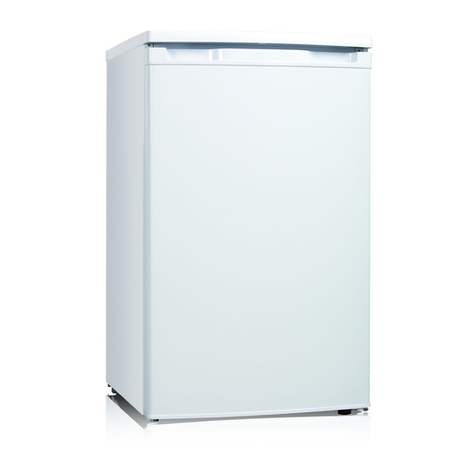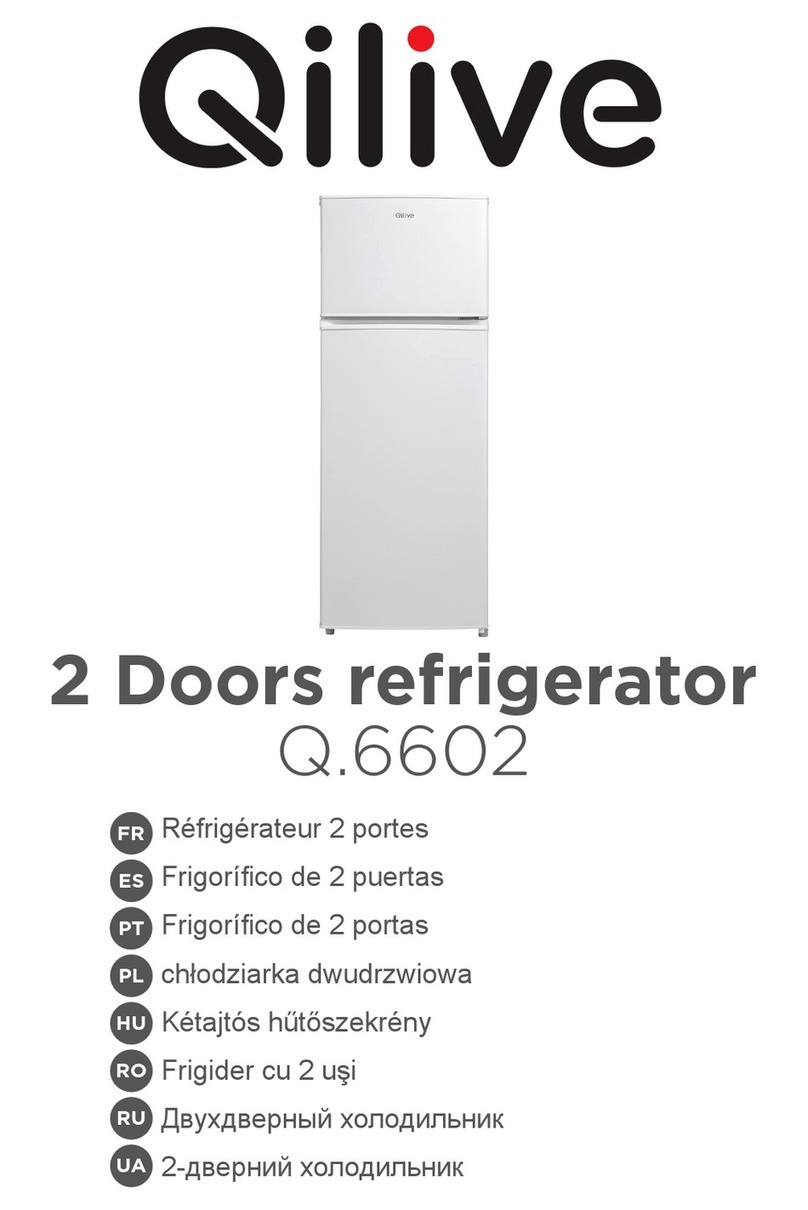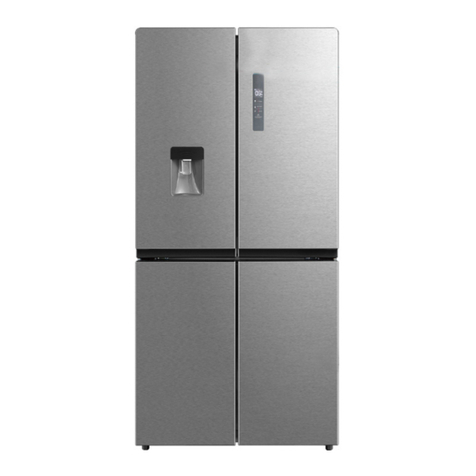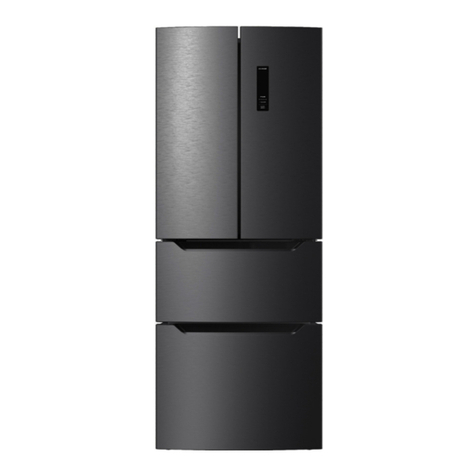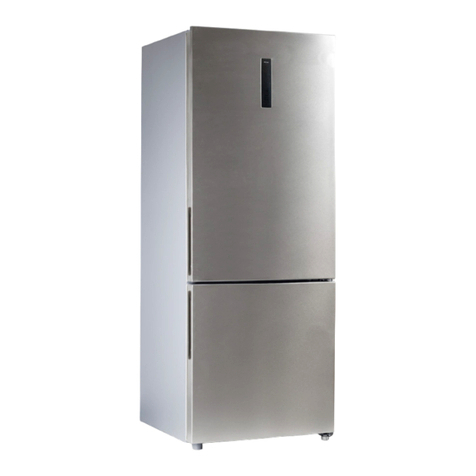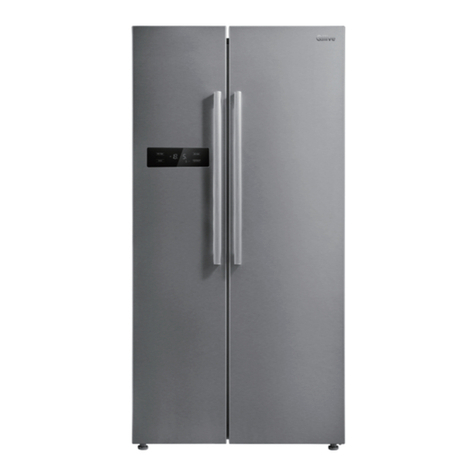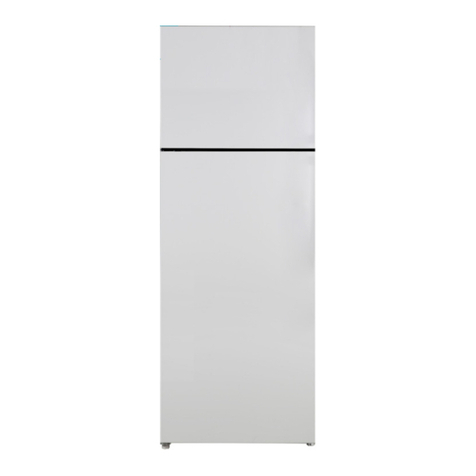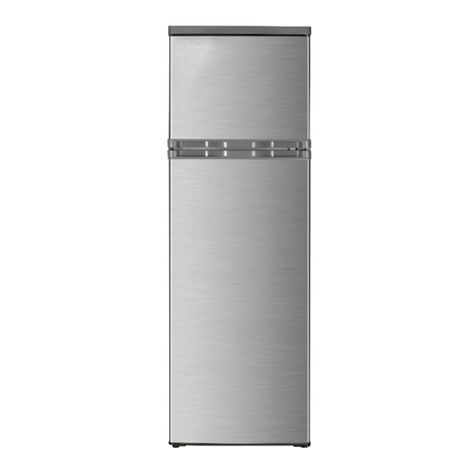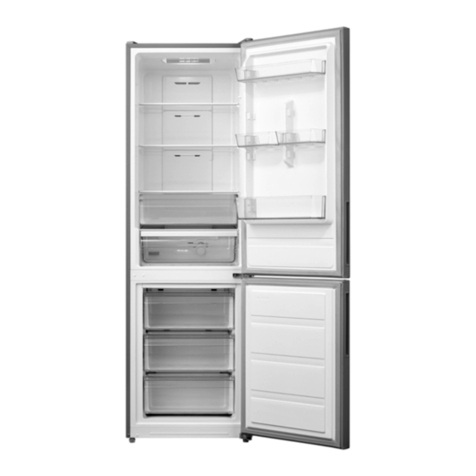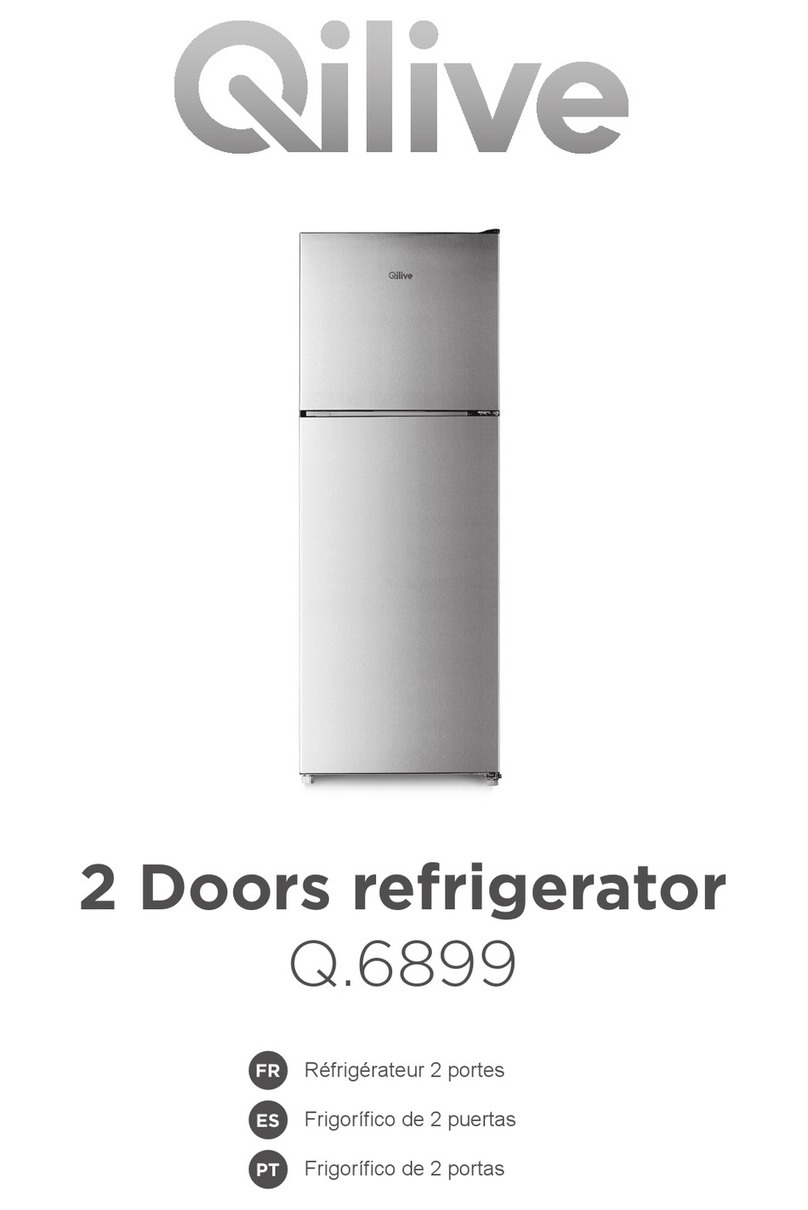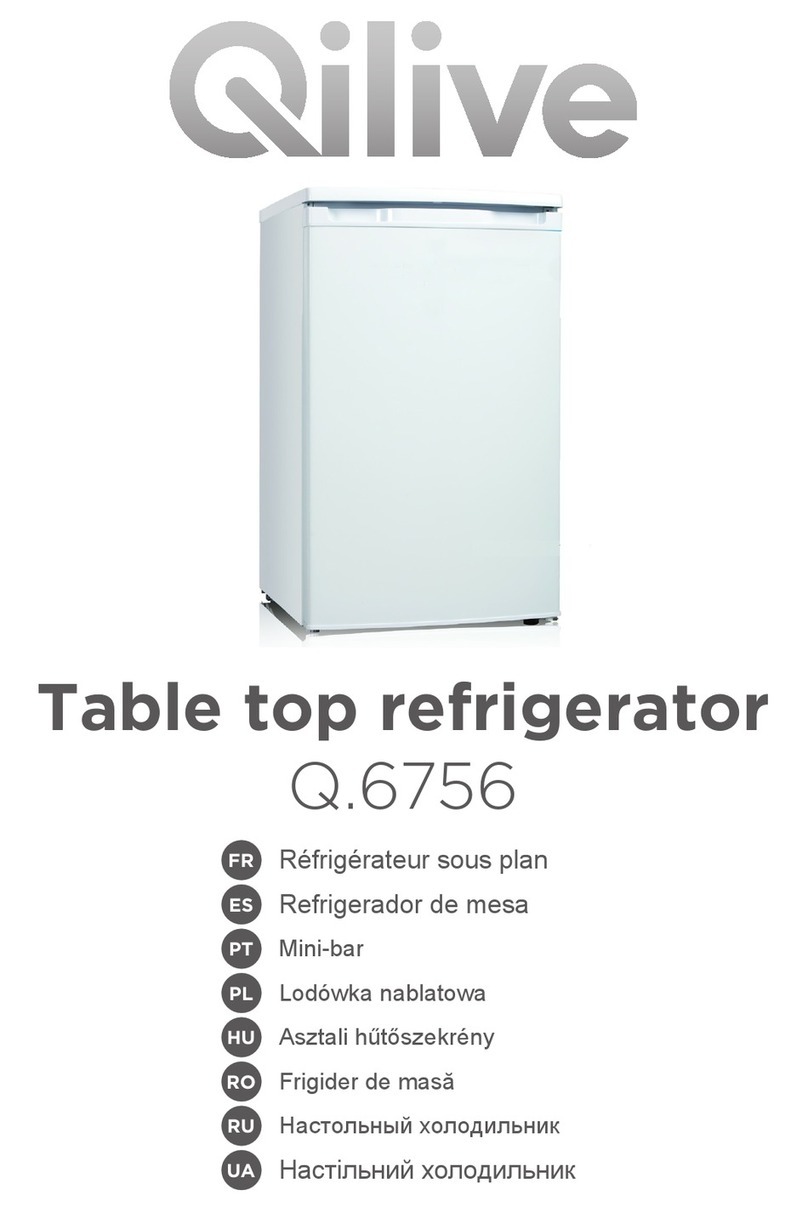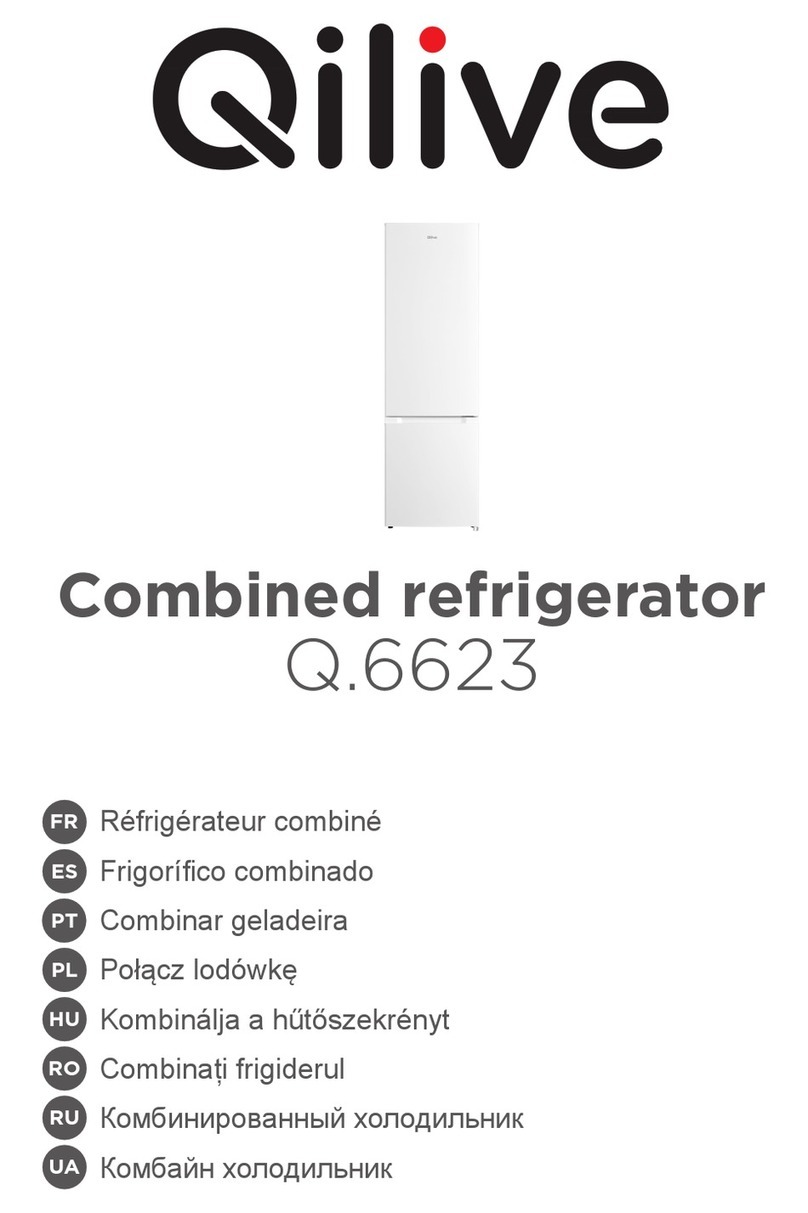
10
EN 1. Place the appliance in a well ventilated room on a dry, stable and level surface, away
from direct sunlight and other heat sources.
2. Ensure sufcient air circulation at the rear of the appliance. Do not place the
appliance against a wall to avoid noise caused by vibration. Make sure that the air
can still circulate freely around the appliance. Insufcient ventilation would result
in malfunction and increased energy consumption. Leave a space of at least
10 cm between the appliance and the wall, and at least 30 cm between the top of the
appliance and the ceiling.
3. Leave enough space to access and open the door easily (W x D ≥ 82 x 107 cm)
( Fig. 1). If necessary, change the direction of door opening as described below.
4.3 Level feet
If the appliance tilts in some way, adjust the height of the left/right foot (2) of the appliance
to be in a horizontal level ( Fig. 2).
1. Turn the foot (2) clockwise to raise the appliance.
2. Turn the foot (2) counter clockwise to lower the appliance.
Note: If the appliance is not level, the door and the door seal will not be closed properly.
4.4 Reverse door
Ensure the appliance is unplugged and empty. All parts removed must be saved to do the
reinstallation of the door. It is better that 2 people handle the appliance during assembly.
1. Close the doors.
2. Remove the hole cover, then unscrew and remove the upper hinge ( Fig. 3).
3. Remove the upper door, and place it on a soft pad to avoid scratches. Unscrew and
remove the middle hinge ( Fig. 4).
4. Remove the lower door, and place it on a soft pad to avoid scratches.
5. Place a rug or blanket on the oor to avoid scratches on the surface. Carefully lay
down the appliance.
Warning: Do not lay down the appliance for an extended period of time!
6. Unscrew and remove the lower hinge. Remove the top and middle stoppers, as well
as middle hinge adjuster ( Fig. 5).
7. Remove the door sleeve and door holder. Assemble the bottom hinge assembly on
the left side of the lower door ( Fig. 6).
8. Install the adjuster on the right side of the appliance ( Fig. 7).
9. Install the door sleeve and door holder on the left side of the lower door. Place
the appliance in a vertical position and insert the lower door onto the lower hinge
( Fig. 8).
10. Install the middle hinge on the left side of the appliance. Install the door sleeve and
door holder on the left side of the upper door ( Fig. 9).
11. Insert the upper door onto the middle hinge. Insert and secure the upper hinge on
the left side of the appliance. Install the hole cover, top and middle hinges plugs
( Fig. 10).
Note: Ensure the door closes properly before using the appliance.
4.5 Adjusting shelves and door compartments
Adjust the location of the shelves (6) and door compartments (1) according to your
storage needs.
1. Slide the shelves (6) into the inside wall guides at the desired height.
Note:
• Always slide one of the shelves into the lowest set of guides, above the crisper
drawer (4).
• Remove one or more shelves if needed.
2. Slide the door compartments (1) down into the doors at the desired height. To adjust
the position of a door compartment (1), lift it until it becomes free, and then slide it to
the desired position.
